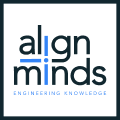MODIFIED ON: April 18, 2024 / ALIGNMINDS TECHNOLOGIES / 0 COMMENTS

At AlignMinds, we’ve successfully navigated numerous software migration projects, each presenting its unique set of challenges and learning opportunities. In this article, we share our insights and practical tips from these experiences to help you manage the complexities of software migration effectively. Our aim is to provide you with actionable advice that reflects our hands-on expertise in the field.
Understanding Software Migration
Software migration is a critical process for businesses looking to upgrade or change their technological infrastructure. It involves moving software from one environment to another, which could include transitioning to a different operating system, database, server, or an entirely new technological architecture. Our approach has been refined through projects like Netflix’s migration to AWS, a benchmark in the industry for scaling services and improving reliability.
Challenge 1: Ensuring Data Integrity
Maintaining data integrity is paramount in software migration. It’s essential to ensure no data is lost or corrupted during the transition.
Tips from Our Experience:
• Regular Data Audits: Conduct thorough data audits before and after migration to identify and address any discrepancies.
• Selecting the Right Tools: Use reliable data validation tools that are compatible with your data formats.
• Effective Backup Strategies: Implement a multi-tiered backup strategy to ensure data safety at every stage of the migration.
Challenge 2: Minimizing Downtime
Minimizing downtime is crucial for maintaining business operations and ensuring user satisfaction.
Tips from Our Experience:
• Plan for Low-Traffic Periods: Schedule migrations during off-peak hours to reduce impact.
• Phased Migration Approach: Gradually shift traffic between old and new databases to manage the migration smoothly.
• Testing in Staged Environments: Always conduct thorough testing in a controlled environment before going live.
Challenge 3: Compatibility and Integration
Ensuring that the new system is compatible with existing systems and seamlessly integrates is a significant challenge.
Tips from Our Experience:
• Extensive Compatibility Testing: Test the new system extensively to ensure compatibility with existing infrastructure.
• Early User Involvement: Involve end-users in the early stages of testing to gather valuable feedback.
• Incremental Integration: Adopt a step-by-step approach to integration to minimize risks.
Challenge 4: User Training and Adaptation
Helping users adapt to new software is a critical aspect of the migration process.
Tips from Our Experience:
• Tailored Training Programs: Develop training programs that cater to users with varying levels of expertise.
• Ongoing Support and Resources: Provide continuous support and resources to users post-migration.
• Open Feedback Channels: Establish feedback mechanisms to continuously improve the migration process based on user input.
Conclusion
At AlignMinds, we understand that software migration, though challenging, is essential for businesses to keep pace with technological advancements. The key to successful migration lies in meticulous planning, understanding user needs, ensuring data integrity, minimizing downtime, focusing on compatibility, and facilitating user training. Our tips, derived from years of practical experience, are designed to guide you through the complexities of software migration, ensuring a smooth and successful transition. With the right approach and expertise, achieving porting perfection is not just a goal, but a reality.
Leave a reply
Your email address will not be published.
-
Recent Posts
- The Ultimate 4-Step Guide to Modernizing Your Applications
- The 12 Most Popular Computer Vision Tools in 2024
- How MLOps is Transforming Businesses in 2024
- The Ultimate Guide to Product Engineering Services for Businesses
- 5 Top Use Cases of Computer Vision in the Hospitality Industry
-
Categories
- MVP Development (5)
- AlignMinds (55)
- Operating Systems (1)
- Android POS (3)
- Application Hosting (1)
- Artificial Intelligence (23)
- Big Data (2)
- Blockchain (1)
- Cloud Application Development (7)
- Software Development (29)
- Software Testing (9)
- Strategy & User Experience Design (4)
- Web Application Development (23)
- Cyber Security (6)
- Outsourcing (7)
- Programming Languages (3)
- DevOps (5)
- Software Designing (6)
- How to Code (4)
- Internet of Things (1)
- Machine Learning (2)
- Mobile App Marketing (4)
- Mobile Application Development (18)
- Mobile Applications (5)







